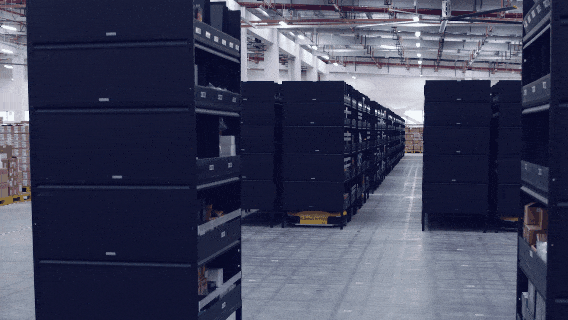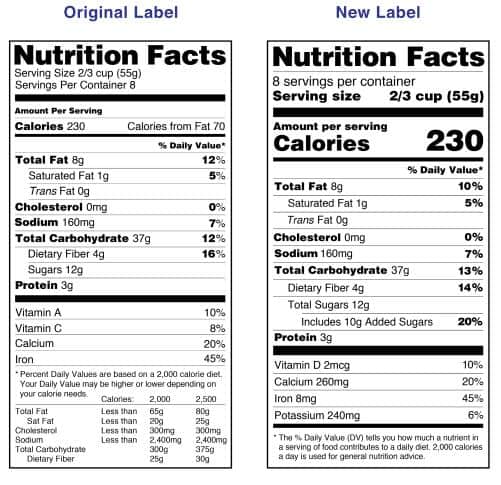In the age of digital storage, everything is uploaded to the cloud. Cloud may not always be the best option when there is high traffic. To keep your operations efficient, we offer edge computing. Edge computing refers to the generation, collection and analysis of data at the site where it is generated. Proper data analysis right now can help you make the right choices when making decisions. Any industry can take advantage of edge computing, including logistics, manufacturing, retail and healthcare.
Similarly, enterprise mobile computers that collect data must be available for edge computing. Mobile computers associated with barcode readers and wireless network devices are equipped with features specifically designed to collect data in real time. Standard models can transmit data as they are entered, while other configurations have scanning and RFID capabilities.
In the short term, you can generate, collect and analyze data. In the long run, you will be able to take advantage of the vast amounts of data collected to save downtime and predict failures before they happen. It is important to understand the key differences between cloud computing and edge computing, the conditions under which edge computing can benefit, and the transition to edge computing.
Changers: Edge Computing and Cloud Storage
What is edge computing?
Edge computing (also known as fog computing) is like smart traffic. What it does is the ability to direct data to an edge server (central data warehouse) to be collected and analyzed in real-time, without transmission delays passing between the application and the cloud. This will save users time and give them the operational efficiencies they need. It is important to know that edge computing cannot replace the cloud, but can work in tandem with the cloud.
Edge computing is ideal for time-sensitive operations because it enables users to work with the data at hand and have a faster response time to the situation at hand.
What is cloud storage?
Where data is collected, it needs to be stored. The real challenge today is that larger hard drives or external storage devices can no longer use it. Cloud Storage provides a remote database for all your data and information. You can save and retrieve data from anywhere with internet access. Also, cloud storage is convenient and offers greater flexibility.
While the cloud provides a lot of storage and flexibility, there can be delays in transferring data when transferring large amounts of data at once. These delays could cost the company money.
It is important to know that edge computing cannot replace the cloud, but can work in tandem with it.
Challenge: Increase Efficiency
A common goal across industries is to improve day-to-day operational efficiency and maximize capital during time-critical situations. After all, time is money. In many industries, people use Cloud to store and analyze data to develop business models. Cloud computing enables data analysts to leverage organizational data and determine operational and purchasing patterns. But even with the necessary data, how can businesses be more efficient in a pinch if the cloud fails?
Solution: Edge Computing
Edge computing brings local access to data and provides the insights IoT devices need to deliver real-time data without cloud latency.
How does it work? – For edge devices like smartphones, tablets, laptops or enterprise mobile computers, the data in the device must be processed and sent to the Cloud or Edge (local data warehouse). While it doesn’t sound like the cloud is the source of the problem, the problem is that the cloud has to process and process a lot of data. The relatively long distance and time required to migrate data from business applications to the cloud results in slower response times.
With edge computing, you can start with an application and then transfer data to an edge server between the cloud and the user. In turn, the distance from the Edge server directly back to the user for analysis and data processing is shortened, and response times are faster.
Edge computing servers can also bring the added benefit of protecting a company’s sensitive data, as data remains close to the network core and reduces the chance of data being lost in the cloud.
Companies such as Microsoft and Google are already adopting Edge computing initiatives. The new Edge solution can extend cloud analytics from Edge devices to AI applications in real time.
Microsoft’s Kevin Scott said:
“As we bring the power of the cloud to the edge of the device, we can respond, reason and act in real-time and deliver capabilities in areas with limited or no connectivity…it’s early days, but we’re starting to See how these new capabilities can be applied to solve key world challenges.”
- Advantages of edge computing
- Reduce data transfer and storage costs
- Localized data reduces data traffic
- Offline connection and access
- Real-time monitoring
- Make the most of ground data without lag
- Increase security and ensure data integrity
- Optimize operational efficiency
- The sooner the data is analyzed after collection, the better. The speed of cloud computing affects efficiency and delays active management.
What does this mean for your business?
With localized data and needed insights, edge computing can streamline traffic to edge devices and provide real-time, local analytics.
This can give any industry a competitive advantage, and time is of the essence in streamlining operations. Defects and problems must be identified quickly, or equipment failure can lead to costly downtime or safety hazards.
Edge computing provides faster operational insights from collected data. Here are some ways Edge computing can help you:
- Diagnose the functionality of devices in the warehouse for better remote management
- Predict failure before it happens and generate a trigger to stop it
- Analyze the possibility of equipment failure in real time
- Suggest workers to managers who can optimize productivity to handle work schedules when needed
- Instant alerts and dashboards to avoid any major challenges
- The big picture
The cloud is still useful. You can use it for big data and things that are not time-critical. In the face of everyday challenges and emergencies, edge computing can make a big difference. Once data is received, Edge enables industries across the supply chain to increase efficiency and productivity.
Cross-industry edge computing
Edge computing is used in various industries. Grocery chains monitor their refrigerated products to ensure perishables can maintain their optimum temperature during transportation and storage. Logistics providers use data to track the movement of goods through warehouses and yards. Retail uses edge computing applications to enhance the shopper experience. In healthcare, professionals can use healthcare wearables to analyze pulse, steps, and sleep patterns. Consumers wear fitness trackers, smartwatches and pedometers in order to transmit data to Edge devices for doctors and clinical professionals to analyze the data.
Transition to edge computing
Edge computing is designed to take advantage of the vast amounts of data created to prevent security breaches and prevent the loss of time and money due to downtime. Shifting to Edge computing enables localized data processing, and any network failure at the Cloud will not affect the business. This will save users time and give them the operational efficiencies they need to keep their business going. Without Edge computing, users run the risk of higher lost productivity and substantial repair or replacement costs. Any minor issue that cannot be prevented or resolved immediately can threaten workplace productivity and efficiency.




